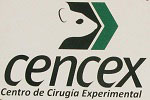Pre-clinical biomedical research
Keywords:
preclinical research, animal experimentation, biomodels, research design, publication error.Abstract
Introduction: a historical analysis would reveal that the use of animals as test subjects has been both effective and essential. Such a practice has served both to save lives and to answer a variety of biomedical questions.
Objective: carry out a bibliographic review about preclinical biomedical research.
Methods: abibliographic review was conducted about preclinical biomedical research on the Internet. Most of the papers included in the search have been published in the last five years. An evaluation was performed of international high impact journals from the Web of Sciences dealing with the subject (32 journals), as well as two Cuban journals. Databases from reference systems such as MEDLINE, PubMed and SciELO were consulted with the aid of search terms like " animal research", "preclinical investigation", "biomodels", "laboratory animals", "translational medicine" and their Spanish counterparts. The papers included were in English, Portuguese or Spanish. Of the 136 papers obtained, the reviewers selected the 53 which approached the study subject in a more comprehensive manner. One book was also reviewed.
Data analysis and integration: an analysis of the representativeness of papers in the scientific journals where they were published showed that 9.4 % corresponded to the Journal of Clinical Periodontology, and the same percentage to PloS Biology. The remaining papers were evenly distributed among the other journals. Most studies suggest that biomodels are an effective tool in scientific research, but they should be correctly designed, for it is common to find bias in the internal and external validity of the research, leading to errors in scientific publications.
Conclusions: lack of knowledge about characteristics inherent to biomodels, preclinical research, methodological design and the very development of the research may lead to errors in the analysis and publication of results, affecting the quality of the research and contributing to the frequent scarcity of reliable animal studies.
Downloads

Published
How to Cite
Issue
Section
License
Authors retain all rights to their works, which they can reproduce and distribute as long as they cite the primary source of publication.
The Rev Cubana Estomatol is subject to the Creative Commons Attribution-Non-Commercial 4.0 International License (CC BY-NC 4.0) and follows the publication model of SciELO Publishing Schema (SciELO PS) for publication in XML format.
You are free to:
- Share — copy and redistribute the material in any medium or format.
- Adapt — remix, transform, and build upon the material.
The licensor cannot revoke these freedoms as long as you follow the license terms.
Under the following terms:
Attribution — You must give appropriate credit, provide a link to the license, and indicate if changes were made. You may do so in any reasonable manner, but not in any way that suggests the licensor endorses you or your use.
- NonCommercial — You may not use the material for commercial purposes.
No additional restrictions — You may not apply legal terms or technological measures that legally restrict others from doing anything the license permits.
Notices:
- You do not have to comply with the license for elements of the material in the public domain or where your use is permitted by an applicable exception or limitation.
- No warranties are given. The license may not give you all of the permissions necessary for your intended use. For example, other rights such as publicity, privacy, or moral rights may limit how you use the material.

